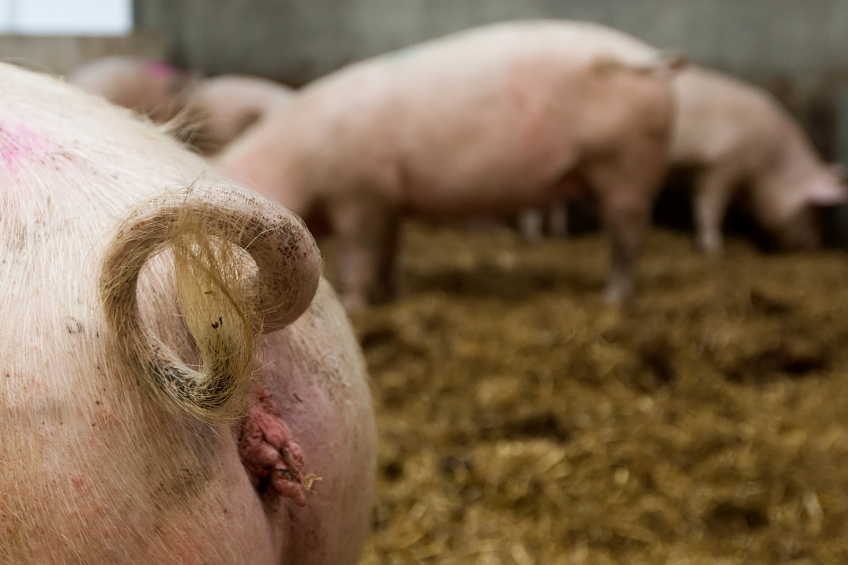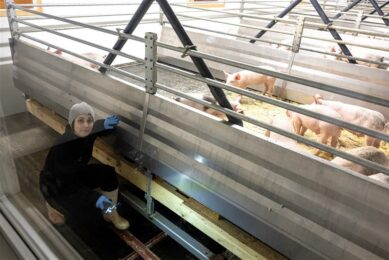Providing straw for sows in partly-slatted pens

It is feasible to provide sows housed in partly-slatted farrowing pens with 15 kg chopped straw at farrowing and still maintain good pen hygiene with efficient drainage. The appropriate chop length of straw depends on the type and design of the slatted flooring, according to the British Society of Animal Science (BSAS).
The research, which was conducted at the Swedish University of Agricultural Sciences, shows that it is possible to provide farrowing sows with straw, enabling them to express normal nest-building behaviour. Piglets may also benefit from the provision of straw in the early stages of life because it gives thermal comfort and may reduce the incidence of lameness and lesions.
The study, involving 96 sows from two commercial pig herds looked at the throughput capacity (i.e.the ability of straw to drain through slatted flooring) of 15 kg chopped wheat straw provided two days before expected farrowing. The drainage of straw of three different length categories: short (39 mm), medium (70 mm) and long (130 mm) was compared on both plastic and cast-iron slats in loose sow housing. Liquid manure was removed by mechanically operated scrapers under the slatted flooring on both farms.
Throughput of the short and medium length straw occurred to a large extent through both plastic and cast-iron slats. However, straw of the longer length category drained more gradually with some still remaining four days after farrowing. A larger amount of straw bedding remained on Day 4 after farrowing on plastic-slatted flooring with fewer, shorter slat openings compared to cast-iron pens with a greater number of longer slat openings.
Good pen hygiene
In most cases, the pen hygiene was good, despite the large quantities of straw. But, many of the plastic-slatted pens had poor hygiene scores when longer straw was added because of the poor drainage. So it is recommended that straw with a long chop length is not used on this type of flooring. The study found that very little straw drained through the slats until after farrowing had occurred.
The researchers suggested this may be due to the sows typically building their nests on the solid floor area of the pens. Therefore, it is probably feasible to provide sows with straw earlier than two days before farrowing. After farrowing the throughput of straw was much quicker, perhaps due to increased activity of the sows and piglets during this period.
The research comes with a word of caution that to overcome the technical difficulties of providing straw in larger quantities, slurry systems should be adjusted to cope with the increased throughput.











